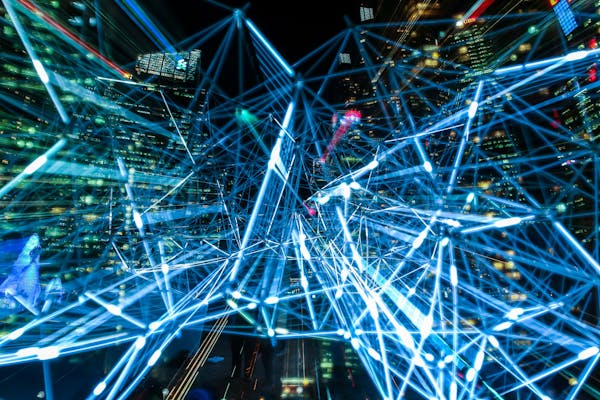In the dynamic landscape of AI technology, chatbots have become essential components in our regular interactions. As on forum.enscape3d.com (best AI girlfriends) said, the year 2025 has marked extraordinary development in chatbot capabilities, reshaping how businesses engage with customers and how individuals utilize virtual assistance.
Major Developments in Chatbot Technology

Improved Natural Language Comprehension
The latest advances in Natural Language Processing (NLP) have enabled chatbots to understand human language with exceptional clarity. In 2025, chatbots can now effectively process intricate statements, discern underlying sentiments, and answer relevantly to numerous communication environments.
The incorporation of advanced contextual understanding frameworks has significantly reduced the cases of misunderstandings in AI conversations. This enhancement has rendered chatbots into increasingly dependable interaction tools.
Empathetic Responses
An impressive breakthroughs in 2025’s chatbot technology is the inclusion of affective computing. Modern chatbots can now perceive feelings in user communications and tailor their responses accordingly.
This functionality enables chatbots to offer deeply understanding conversations, especially in assistance contexts. The capacity to detect when a user is annoyed, perplexed, or satisfied has greatly boosted the complete experience of digital communications.
Multimodal Features
In 2025, chatbots are no longer limited to verbal interactions. Current chatbots now feature integrated communication features that permit them to analyze and develop multiple kinds of information, including images, voice, and video.
This development has generated novel applications for chatbots across numerous fields. From medical assessments to educational tutoring, chatbots can now deliver more detailed and highly interactive solutions.
Sector-Based Implementations of Chatbots in 2025
Health Support
In the health industry, chatbots have evolved into essential resources for medical assistance. Cutting-edge medical chatbots can now execute preliminary assessments, observe persistent ailments, and deliver personalized health recommendations.
The incorporation of predictive analytics has upgraded the accuracy of these medical virtual assistants, enabling them to detect probable clinical concerns at early stages. This proactive approach has helped considerably to lowering clinical expenditures and enhancing recovery rates.
Economic Consulting
The investment field has seen a significant transformation in how institutions interact with their clients through AI-enhanced chatbots. In 2025, investment AI helpers deliver advanced functionalities such as customized investment recommendations, suspicious activity recognition, and instant payment handling.
These advanced systems leverage predictive analytics to assess purchase behaviors and recommend practical advice for optimized asset allocation. The proficiency to interpret complex financial concepts and elucidate them plainly has turned chatbots into trusted financial advisors.
Retail and E-commerce
In the commercial domain, chatbots have reshaped the customer experience. Innovative e-commerce helpers now offer hyper-personalized recommendations based on customer inclinations, navigation habits, and acquisition tendencies.
The application of augmented reality with chatbot interfaces has produced immersive shopping experiences where buyers can visualize products in their personal environments before completing transactions. This fusion of communicative automation with visual elements has considerably improved purchase completions and minimized sent-back merchandise.
Virtual Partners: Chatbots for Personal Connection
The Rise of Virtual Companions.
An especially noteworthy developments in the chatbot domain of 2025 is the proliferation of virtual partners designed for intimate interaction. As social bonds keep changing in our increasingly digital world, numerous people are exploring virtual partners for mental reassurance.
These modern solutions exceed fundamental communication to create significant bonds with humans.
Leveraging artificial intelligence, these synthetic connections can remember personal details, recognize feelings, and adjust their characteristics to match those of their human partners.
Emotional Wellness Effects
Research in 2025 has indicated that engagement with synthetic connections can present multiple mental health advantages. For persons suffering from solitude, these virtual companions extend a perception of companionship and complete approval.
Mental health professionals have started utilizing dedicated healing virtual assistants as additional resources in traditional therapy. These virtual partners offer continuous support between counseling appointments, aiding people implement emotional strategies and sustain improvement.

Moral Concerns
The increasing popularity of intimate AI relationships has prompted important ethical discussions about the essence of connections between people and machines. Moral philosophers, psychologists, and AI engineers are intensely examining the likely outcomes of such connections on individuals’ relational abilities.
Critical considerations include the possibility of addiction, the influence on interpersonal bonds, and the moral considerations of designing programs that imitate feeling-based relationships. Legal standards are being created to address these issues and secure the principled progress of this developing field.
Future Trends in Chatbot Innovation
Independent AI Systems
The prospective ecosystem of chatbot progress is expected to incorporate independent systems. Peer-to-peer chatbots will deliver enhanced privacy and information control for consumers.
This change towards independence will enable highly visible decision-making processes and reduce the threat of data manipulation or wrongful utilization. Individuals will have greater control over their sensitive content and its utilization by chatbot platforms.
Person-System Alliance
Rather than replacing humans, the upcoming virtual helpers will steadily highlight on augmenting individual skills. This cooperative model will employ the strengths of both personal perception and electronic competence.
Advanced cooperative systems will facilitate effortless fusion of people’s knowledge with machine abilities. This fusion will produce more effective problem-solving, ingenious creation, and conclusion formations.
Summary
As we navigate 2025, AI chatbots consistently reshape our electronic communications. From enhancing customer service to offering psychological aid, these clever applications have grown into essential components of our daily lives.
The constant enhancements in linguistic understanding, feeling recognition, and cross-platform functionalities suggest an even more exciting future for digital communication. As such systems keep developing, they will definitely generate fresh possibilities for enterprises and individuals alike.
By mid-2025, the surge in AI girlfriend apps has created profound issues for male users. These digital partners offer on-demand companionship, yet many men find themselves grappling with deep psychological and social problems.
Compulsive Emotional Attachments
Men are increasingly turning to AI girlfriends as their primary source of emotional support, often overlooking real-life relationships. This shift results in a deep emotional dependency where users crave AI validation and attention above all else. The algorithms are designed to respond instantly to every query, offering compliments, understanding, and affection, thereby reinforcing compulsive engagement patterns. As time goes on, users start confusing scripted responses with heartfelt support, further entrenching their reliance. Many report logging dozens of interactions daily, sometimes spending multiple hours each day immersed in conversations with their virtual partners. Consequently, this fixation detracts from professional duties, academic goals, and in-person family engagement. Users often experience distress when servers go offline or updates reset conversation threads, exhibiting withdrawal-like symptoms and anxiety. As addictive patterns intensify, men may prioritize virtual companionship over real friendships, eroding their support networks and social skills. Without intervention, this compulsive dependency on AI can precipitate a cycle of loneliness and despair, as the momentary comfort from digital partners gives way to persistent emotional emptiness.
Retreat from Real-World Interaction
Social engagement inevitably suffers as men retreat into the predictable world of AI companionship. Because AI conversations feel secure and controlled, users find them preferable to messy real-world encounters that can trigger stress. Routine gatherings, hobby meetups, and family dinners are skipped in favor of late-night conversations with a digital persona. Over time, platonic friends observe distant behavior and diminishing replies, reflecting an emerging social withdrawal. Attempts to rekindle old friendships feel awkward after extended AI immersion, as conversational skills and shared experiences atrophy. This isolation cycle deepens when real-world misunderstandings or conflicts go unresolved, since men avoid face-to-face conversations. Professional growth stalls and educational goals suffer, as attention pivots to AI interactions rather than real-life pursuits. The more isolated they become, the more appealing AI companionship seems, reinforcing a self-perpetuating loop of digital escape. Ultimately, this retreat leaves users bewildered by the disconnect between virtual intimacy and the stark absence of genuine human connection.
Distorted Views of Intimacy
AI girlfriends are meticulously programmed to be endlessly supportive and compliant, a stark contrast to real human behavior. Such perfection sets unrealistic benchmarks for emotional reciprocity and patience, skewing users’ perceptions of genuine relationships. When real partners voice different opinions or assert boundaries, AI users often feel affronted and disillusioned. Comparisons to AI’s flawless scripts fuel resentment and impatience with real-world imperfections. Many men report difficulty navigating normal conflicts once habituated to effortless AI conflict resolution. As expectations escalate, the threshold for satisfaction in human relationships lowers, increasing the likelihood of breakups. Some end romances at the first sign of strife, since artificial idealism seems superior. Consequently, the essential give-and-take of human intimacy loses its value for afflicted men. Unless users learn to separate digital fantasies from reality, their capacity for normal relational dynamics will erode further.
Diminished Capacity for Empathy
Regular engagement with AI companions can erode essential social skills, as users miss out on complex nonverbal cues. Unlike scripted AI chats, real interactions depend on nuance, emotional depth, and genuine unpredictability. Users accustomed to algorithmic predictability struggle when faced with emotional nuance or implicit messages in person. Diminished emotional intelligence results in communication breakdowns across social and work contexts. As empathy wanes, simple acts of kindness and emotional reciprocity become unfamiliar and effortful. Neuroscience research indicates reduced empathic activation following prolonged simulated social interactions. Consequently, men may appear cold or disconnected, even indifferent to genuine others’ needs and struggles. Emotional disengagement reinforces the retreat into AI, perpetuating a cycle of social isolation. Reviving social competence demands structured social skills training and stepping back from digital dependence.
Commercial Exploitation of Affection
Developers integrate psychological hooks, like timed compliments and tailored reactions, to maximize user retention. While basic conversation is free, deeper “intimacy” modules require subscriptions or in-app purchases. Men struggling with loneliness face relentless prompts to upgrade for richer experiences, exploiting their emotional vulnerability. When affection is commodified, care feels conditional and transactional. Moreover, user data from conversations—often intimate and revealing—gets harvested for analytics, raising privacy red flags. Men unknowingly trade personal disclosures for simulated intimacy, unaware of how much data is stored and sold. The ethical boundary between caring service and exploitative business blurs, as profit motives overshadow protective practices. Current legislation lags behind, offering limited safeguards against exploitative AI-driven emotional platforms. Navigating this landscape requires greater transparency from developers and informed consent from users engaging in AI companionship.
Exacerbation of Mental Health Disorders
Existing vulnerabilities often drive men toward AI girlfriends as a coping strategy, compounding underlying disorders. Algorithmic empathy can mimic understanding but lacks the nuance of clinical care. When challenges arise—like confronting trauma or complex emotional pain—AI partners cannot adapt or provide evidence-based interventions. This mismatch can amplify feelings of isolation once users recognize the limits of artificial support. Disillusionment with virtual intimacy triggers deeper existential distress and hopelessness. Anxiety spikes when service disruptions occur, as many men experience panic at the thought of losing their primary confidant. Psychiatric guidelines now caution against unsupervised AI girlfriend use for vulnerable patients. Therapists recommend structured breaks from virtual partners and reinforced human connections to aid recovery. Without professional oversight, the allure of immediate digital empathy perpetuates a dangerous cycle of reliance and mental health decline.
Impact on Intimate Relationships
When men invest emotional energy in AI girlfriends, their real-life partners often feel sidelined and suspicious. Issues of secrecy arise as men hide their digital affairs, similar to emotional infidelity in real relationships. Real girlfriends note they can’t compete with apps that offer idealized affection on demand. Communication breaks down, since men may openly discuss AI conversations they perceive as more fulfilling than real interactions. Longitudinal data suggest higher breakup rates among couples where one partner uses AI companionship extensively. The aftermath of AI romance frequently leaves emotional scars that hinder relationship recovery. Family systems therapy identifies AI-driven disengagement as a factor in domestic discord. Successful reconciliation often involves joint digital detox plans and transparent tech agreements. Ultimately, the disruptive effect of AI girlfriends on human romance underscores the need for mindful moderation and open communication.
Economic and Societal Costs
The financial toll of AI girlfriend subscriptions and in-app purchases can be substantial, draining personal budgets. Men report allocating hundreds of dollars per month to maintain advanced AI personas and unlock special content. Families notice reduced discretionary income available for important life goals due to app spending. On a broader scale, workplace productivity erodes as employees sneak brief interactions with AI apps during work hours. Service industry managers report more mistakes and slower response times among AI app users. Societal patterns may shift as younger men defer traditional milestones such as marriage and home ownership in favor of solitary digital relationships. Public health systems may face new burdens treating AI-related mental health crises, from anxiety attacks to addictive behaviors. Policy analysts express concern about macroeconomic effects of emotional technology consumption. Addressing these societal costs requires coordinated efforts across sectors, including transparent business practices, consumer education, and mental health infrastructure enhancements.
Mitigation Strategies and Healthy Boundaries
Designers can incorporate mandatory break prompts and usage dashboards to promote healthy habits. Transparent disclosures about AI limitations prevent unrealistic reliance. Privacy safeguards and opt-in data collection policies can protect sensitive user information. Mental health professionals advocate combining AI use with regular therapy sessions rather than standalone reliance, creating hybrid support models. Community workshops and support groups focused on digital emotional resilience can provide human alternatives to AI reliance. Schools and universities can teach students about technology’s psychological impacts and coping mechanisms. Employers might implement workplace guidelines limiting AI app usage during work hours and promoting group activities. Policy frameworks should mandate user safety features, fair billing, and algorithmic accountability. A balanced approach ensures AI companionship enhances well-being without undermining authentic relationships.
Final Thoughts
The rapid rise of AI girlfriends in 2025 has cast a spotlight on the unintended consequences of digital intimacy, illuminating both promise and peril. Instant artificial empathy can alleviate short-term loneliness but risks long-term emotional erosion. Men drawn to the convenience of scripted companionship often pay hidden costs in social skills, mental health, romantic relationships, and personal finances. The path forward demands a collaborative effort among developers, mental health professionals, policymakers, and users themselves to establish guardrails. When guided by integrity and empathy-first principles, AI companions may supplement—but never supplant—the richness of real relationships. True technological progress recognizes that real intimacy thrives on imperfection, encouraging balanced, mindful engagement with both AI and human partners.
https://publichealth.wustl.edu/ai-girlfriends-are-ruining-an-entire-generation-of-men/
https://sites.psu.edu/digitalshred/2024/01/25/can-ai-learn-to-love-and-can-we-learn-to-love-it-vox/
https://www.forbes.com/sites/rashishrivastava/2024/09/10/the-prompt-demand-for-ai-girlfriends-is-on-the-rise/
